Iran Press/ Iran news: The Iranian miniature, which was recently registered by UNESCO as a world heritage, includes a whole range of arts, including flower and bird paintings, illustrations with human themes, illumination, and decoration of books with Islamic-themed miniatures.
 Brilliant colors are used in Persian Miniature
Brilliant colors are used in Persian Miniature
History:
The art of miniature painting in Persia flourished from the 13th through the 16th centuries, and continues to this day, with several contemporary artists producing notable Persian miniatures. These delicate, lush paintings are typically visually stunning, with a level of detail that can only be achieved with a very fine hand and an extremely small brush.
Although its origins can be difficult to trace, many consider the Arzhang, the illustrated book of prophet Mani (founder of Manichaeism and himself also an artist) from the 3rd century CE during the Sassanian Empire as the foundation of Persian schools of painting.
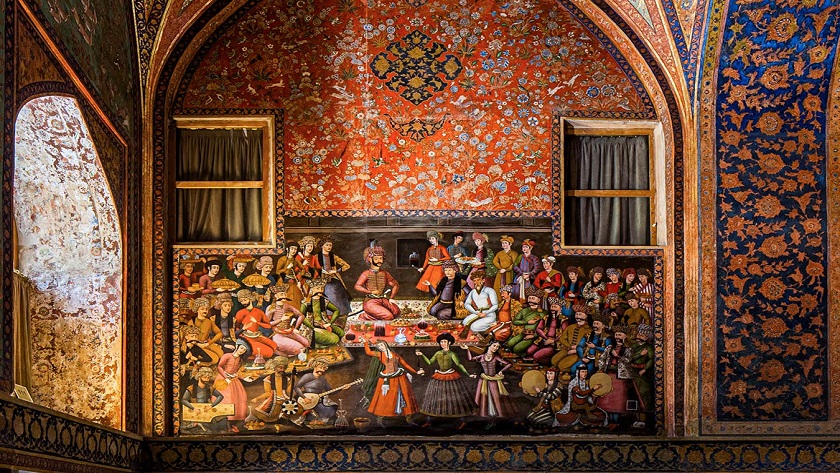 Miniature painting is deeply rooted in traditional courtly painting. Chehel Sotoon Palace in Isfahan
Miniature painting is deeply rooted in traditional courtly painting. Chehel Sotoon Palace in Isfahan
From the 13th to 17th centuries, the Persian literary masterpieces, like Shahnama by Ferdowsi, Khamsah by Nizami and many others, were the sources of inspiration for painters of various schools and styles of Persian/Islamic visual arts. Persian miniature painting started to blossom under Ilkhanid patronage in the 13th century when the great focus was put on illuminating and illustrating the books. It reached its zenith under the patronage of the Timurid rulers in the 14th and 15th centuries, where the cities like Tabriz and Hirat were significant centers of manuscript production.
After the 16th century, Persian miniature painting diverged from manuscripts, mainly focusing on single-page portraits. The center of this newly established style was Isfahan where the renowned Riza Abbasi created the best examples of the school.
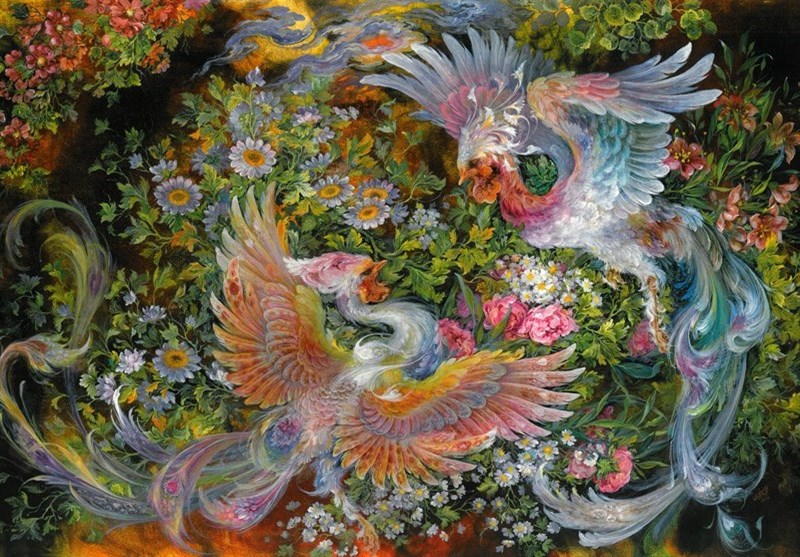 Exquisite, fine colors are mingled with delicate patterns in Persian Miniature
Exquisite, fine colors are mingled with delicate patterns in Persian Miniature
While each school developed a unique set of stylist features, some general features continue to exist as commonplace conventions in Persian miniature painting in almost all the schools – namely the bright colors, the even light and lack of shadow, three-quarter and round faces, simultaneous spaces and time, as well as non-perspective images.
Related News: Miniature Painting registered at UNESCO
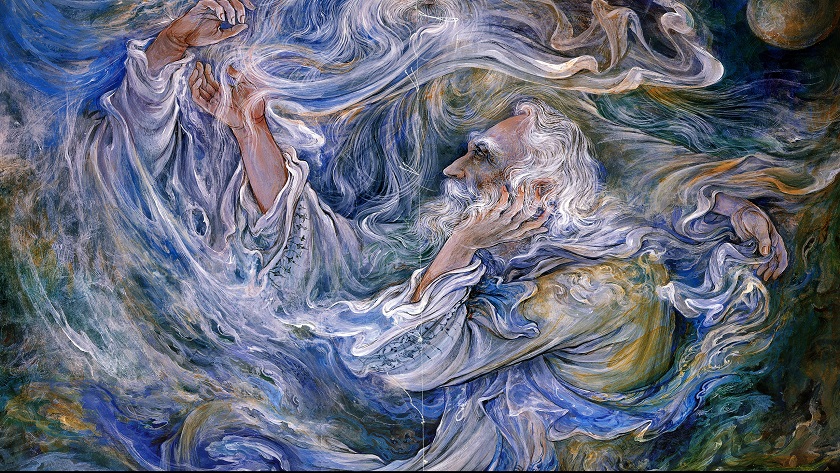 Rumi, a miniature painting by contemporary grand master Mahmoud Farshchian
Rumi, a miniature painting by contemporary grand master Mahmoud Farshchian
Renowned figures
Kamal ud-Din Behzad Herawi, also known as Kamal al-din Bihzad or Kamaleddin Behzad (c. 1450 – c. 1535) was a painter of Persian miniatures and head of the royal ateliers in Herat and Tabriz during the late Timurid and early Safavid periods.
Behzad is the most famous of Persian miniature painters, though he is more accurately understood as the director of a workshop (or kitabkhana) producing manuscript illuminations in a style he conceived. Persian painting of the period frequently uses an arrangement of geometric architectural elements as the structural or compositional context in which the figures are arranged. Behzad is equally skilled with the organic areas of landscape, but where he uses the traditional geometric style Behzad stretches that compositional device in a couple of ways.
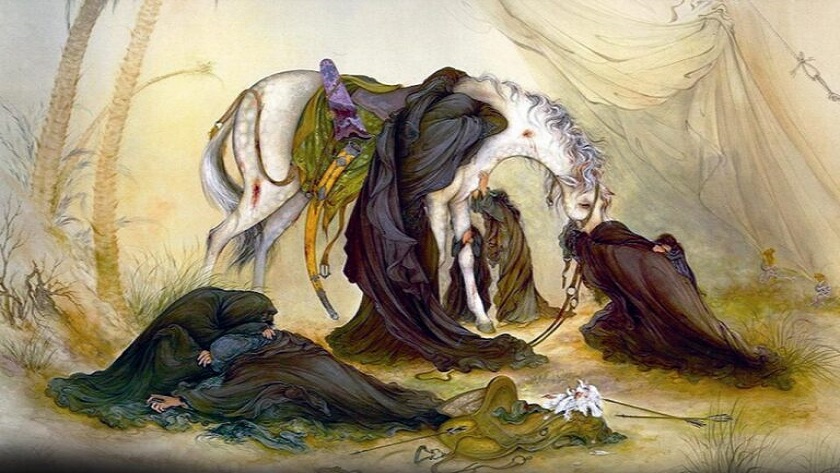 Farshchian's masterpiece was inspired by the Ashura event
Farshchian's masterpiece was inspired by the Ashura event
Mahmoud Farshchian, the Iranian contemporary painter, has had a significant impact on the process of traditional Iranian painting and other traditional arts. Mahmoud Farshchian is, no doubt, the most eminent Persian painter in Iran. His work is admired by critics and the public alike.
His works are influenced by classical poetry, Persian literature, the holy Qur’an, Christian scriptures, as well as his own deep imagination. Farshchian has played an important role in introducing Iranian art to the international art scene.
Related News: Miniature painting manifests elegant Iranian culture: Spox
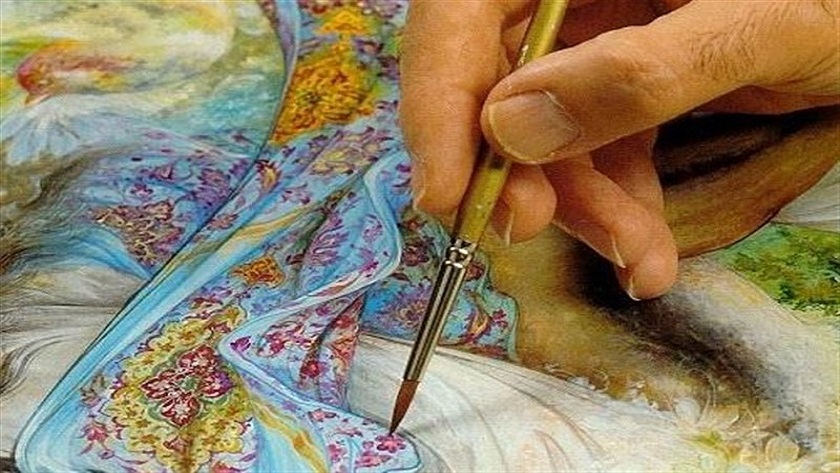 Persian miniature painting needs great attention to details
Persian miniature painting needs great attention to details
How Miniature painting is made:
The process of creating a Persian miniature painting is twofold. The craftsmanship includes preparing the materials such as paper, brushes and colors. The painting process starts with sketching the composition and outlining the pencil lines in ink. What comes in follow is a summary of materials and techniques employed in the process of Persian miniature painting.
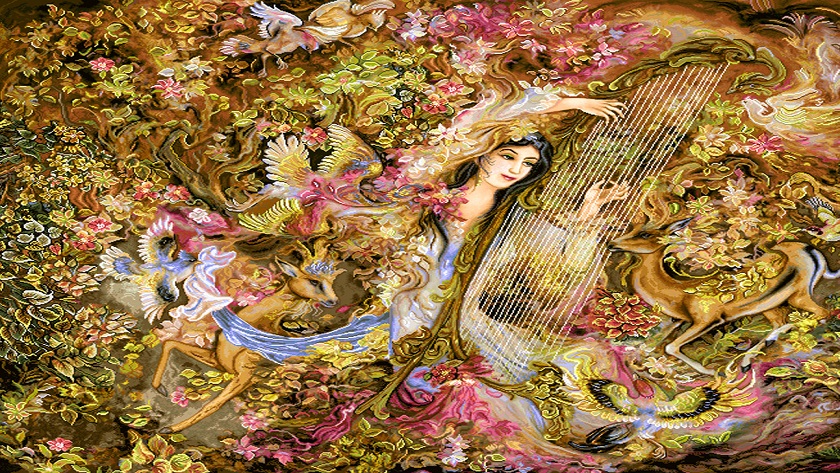 Persian Miniature painting deploys mythical, mystic themes
Persian Miniature painting deploys mythical, mystic themes
Artistic significance:
Several features of Persian miniatures stand out. The first is the size and level of detail; many of these paintings are quite small, but they feature-rich, complex scenes which can occupy a viewer for hours. Classically, a Persian miniature also features accents in gold and silver leaf, along with a very vivid array of colors.
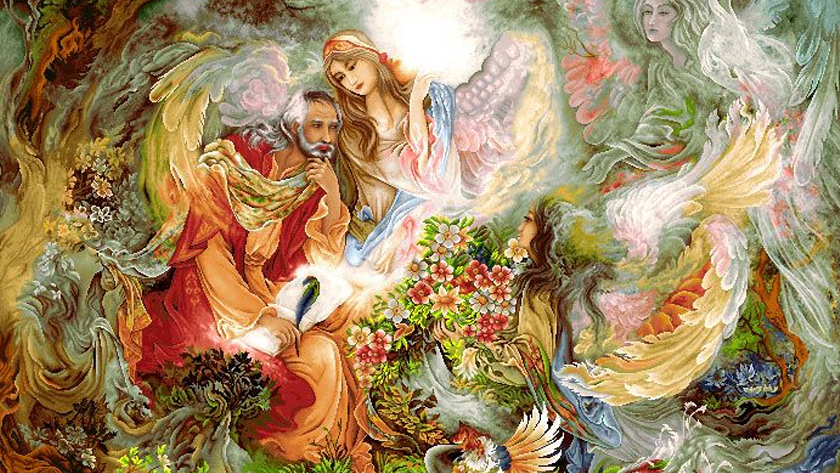 Iranian Miniature is venerated by all connoisseurs across the world
Iranian Miniature is venerated by all connoisseurs across the world
The perspective in a Persian miniature also tends to be very intriguing, with elements overlaid on each other in ways that sometimes feel awkward to people who are accustomed to the look and feel of Western art. Originally, Persian miniatures were commissioned as book illustrations for Persian illuminated manuscripts.
Read More:
Iranian artist marks Soleimani's martyrdom anniv with miniature artwork
Ashkan Salehian

